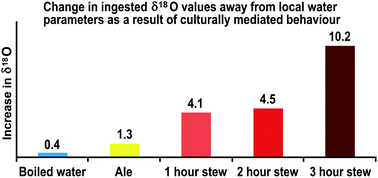Brewing and stewing: the effect of culturally mediated behaviour on the oxygen isotope composition of ingested fluids and the implications for human provenance studies
Abstract
‘Small beer’, ‘wort drinks’ and ‘pottage’ may have been regularly consumed by children during the Medieval Period. This culturally mediated behaviour could have affected the oxygen isotope composition of their

- This article is part of the themed collection: Archaeometry

 Please wait while we load your content...
Please wait while we load your content...